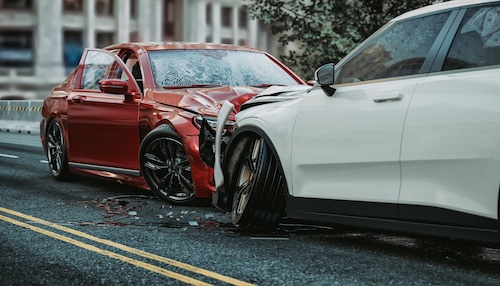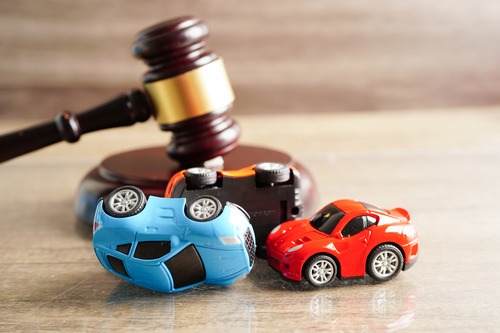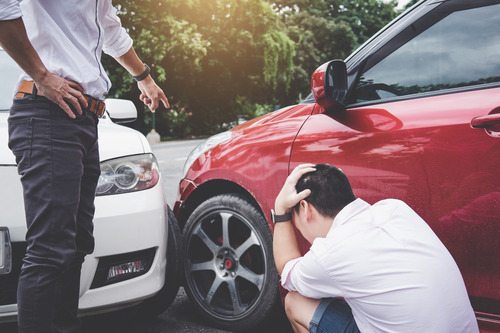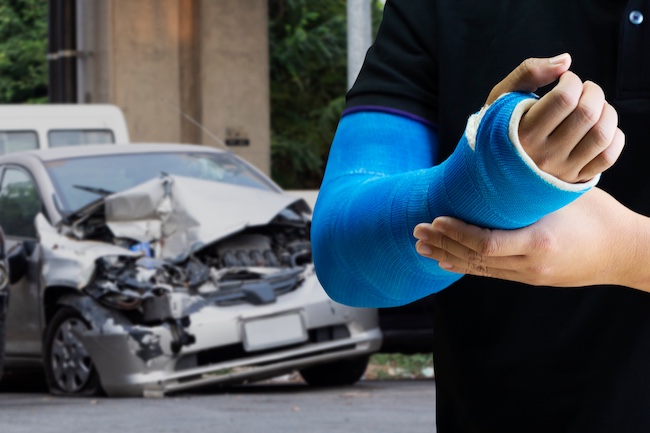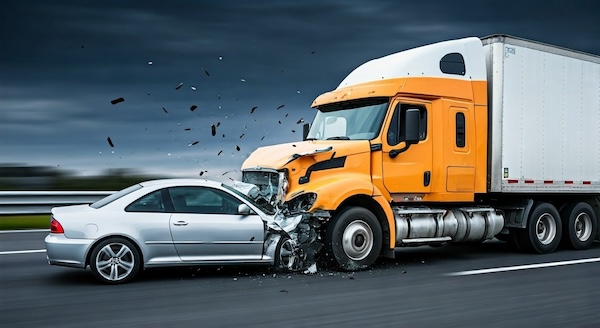Proving fault in a car accident is critical if you want to recover damages for injuries, vehicle repairs, or other losses. In Texas, the law holds the at-fault driver responsible for the crash, but insurance companies and courts need clear evidence before assigning blame. Whether you’re dealing with medical expenses, missed work, or a totaled vehicle, showing who caused the collision is the first step in a successful car accident claim.
In this blog, you’ll learn how fault is determined after a crash, what evidence is needed to support your claim, and why working with an experienced Dallas car accident attorney can make a critical difference in the outcome of your case.
Understanding Fault in Texas Car Accidents
Fault determines who is legally responsible for paying damages after a car accident. In Texas, specific laws guide how fault is assigned and how compensation is awarded.
Texas is an At-Fault State
Texas follows an at-fault system. This means the driver who caused the car accident is legally responsible for paying damages. Victims can seek compensation by filing a car accident claim with the at-fault driver’s insurance company, their own insurer, or through a personal injury lawsuit.
Comparative Negligence in Texas
Texas uses a modified comparative negligence rule. This is outlined in Texas Civil Practice and Remedies Code Section 33.001. If you are 50% or less at fault, you can recover damages. If you are 51% or more at fault, you cannot recover anything. Your compensation is reduced by your percentage of fault.
The 51% Bar Rule
Under the 51% bar rule, the driver must be less than 51% at fault to collect damages. For example, if you are found to be 30% at fault in a car accident, your compensation will be reduced by 30%. If you are 51% at fault or more, you receive nothing.
Legal Duty and Breach
Every driver has a legal duty to exercise reasonable care. Failing to follow traffic laws or driving recklessly may show a breach of that duty. Running a red light, speeding, or distracted driving can be used to prove that the defendant breached their duty. This is a key factor in proving fault in a car accident.
The Reasonable Person Standard
Courts use the reasonable person standard to determine if a driver acted with care. A driver who fails to act as a reasonable person would in the same situation may be found negligent. This helps in establishing legal responsibility for a personal injury claim.
Importance of Evidence in Determining Fault
To prove fault, evidence is critical. Police reports, witness statements, and physical evidence like skid marks or vehicle damage help establish how the crash happened. These details are important in car accident cases and help lawyers show which driver caused the harm.
Why Fault Matters
Determining fault affects your ability to recover damages for medical expenses, lost income, property damage, and other losses. It also affects how much an insurance company may offer to settle a car accident claim.
Immediate Steps to Take After a Crash
What you do right after a car accident can affect your ability to prove fault and support your car accident claim.
Call the Police
Always contact law enforcement after a crash. A police report creates an official record of the accident scene. It includes key details such as the drivers involved, vehicle damage, witness contact information, and sometimes the officer’s opinion on who was at fault. This report is often used as evidence in a personal injury case or car accident claim.
Gather Contact Details
Get the full names, phone numbers, driver’s license numbers, insurance information, and license plate numbers of all drivers involved. Also, collect contact details from any witnesses. This information is essential for filing an insurance claim and for your car accident lawyer to follow up if needed.
Document the Accident Scene
Use your phone to take clear photos and videos. Focus on vehicle damage, skid marks, road conditions, traffic signals, and injuries. This physical evidence helps establish fault and supports your personal injury claim. If you cannot take photos, ask someone else at the scene to help.
Seek Medical Treatment
Even if you feel fine, get checked by a medical professional. Some injuries appear hours or days later. Medical records show the injuries you suffered and link them to the crash. Delayed treatment can make it harder to prove your injury was caused by the accident.
Avoid Admitting Fault
Do not admit fault or speculate about the cause of the crash. Keep your statements factual and brief. Fault is determined by evidence and traffic laws, not personal opinion. What you say at the scene can be used against you later by the insurance company or in court.
Notify Your Insurance Company
Report the crash to your insurance company as soon as possible. Provide accurate details but avoid giving a recorded statement until you have spoken with a car accident attorney. Insurance adjusters may try to minimize your claim or shift blame.
Crucial Evidence to Establish Fault
To prove fault in a car accident, you need clear and organized evidence that shows how the crash happened and who was responsible.
Police Reports
A police report is one of the first documents reviewed in a car accident case. It includes the officer’s observations, witness statements, and a summary of the scene. Sometimes it notes who the officer believes caused the crash. Insurance companies and courts rely heavily on this report when determining fault.
Medical Records
Medical records connect your injuries to the accident. They document the harm you suffered and the medical treatment you received. These records help support a personal injury claim and show how the crash affected your health and finances. Prompt care strengthens your case.
Witness Testimony
Statements from people who saw the crash are valuable. Witnesses can explain what the drivers did before and after the collision. A neutral witness can help confirm your version of events, especially in cases where the other driver denies responsibility.
Video Footage
Traffic cameras, dashcams, and nearby surveillance systems can capture the crash as it happened. Video footage often shows how the vehicles moved, if a driver ran a red light, or if someone was speeding. This type of evidence is difficult to dispute and can strongly support your claim.
Physical Evidence from the Scene
Photos of skid marks, debris, vehicle damage, and road conditions provide context. For example, rear end collisions often leave clear physical signs that help show fault. Evidence like broken glass or crushed metal helps experts understand how the crash occurred.
Vehicle Damage Reports
Estimates from auto repair shops show the extent and location of vehicle damage. These reports can help determine the angle and force of the collision. Consistent damage patterns often match witness accounts and support a negligence claim.
Driver Statements
What each driver says at the scene and later in a report can influence fault. Any admission or conflicting story may be used as evidence. A car accident lawyer can analyze statements for inconsistencies that reveal who caused the crash.
Working with a Dallas Car Accident Attorney
Hiring a Dallas car accident attorney gives you a legal advantage when proving fault and dealing with insurance companies.
Legal Knowledge and Experience
A car accident attorney understands Texas traffic laws, personal injury rules, and court procedures. They know how to build a strong negligence claim using the right evidence. Their experience helps you avoid mistakes that could hurt your car accident case.
Investigating the Accident
Your attorney will investigate the accident scene, review police reports, interview witnesses, and examine video footage or physical evidence. They focus on gathering details that show the other driver breached their legal duty and caused your injuries.
Handling Insurance Companies
Insurance companies often try to pay less than what your claim is worth. A Dallas car accident lawyer communicates directly with the insurance adjusters. They push back against unfair offers and use your medical records, vehicle damage reports, and other evidence to support your personal injury claim.
Proving Fault and Damages
To win your case, you must prove the other driver was at fault and that you suffered harm. An attorney presents clear evidence of negligence, such as distracted driving, speeding, or failure to yield. They also calculate your financial losses, including medical expenses, property damage, and lost income.
Representing You in Court
If a fair settlement is not offered, your attorney can file a lawsuit and take your case to trial. They present your case to a judge or jury using witness testimony, physical evidence, and expert analysis. Their goal is to show that the other driver caused the crash and should be held responsible.
Contact an Experienced Dallas Car Accident Attorney Today!
If you’ve been injured in a car accident and need help proving the other driver was at fault, our team at Texas Lawyers 365 is here to support you. We understand how important it is to act quickly, preserve evidence, and build a strong claim backed by facts.
Contact us at 800-800-8000 for a free case consultation today!

